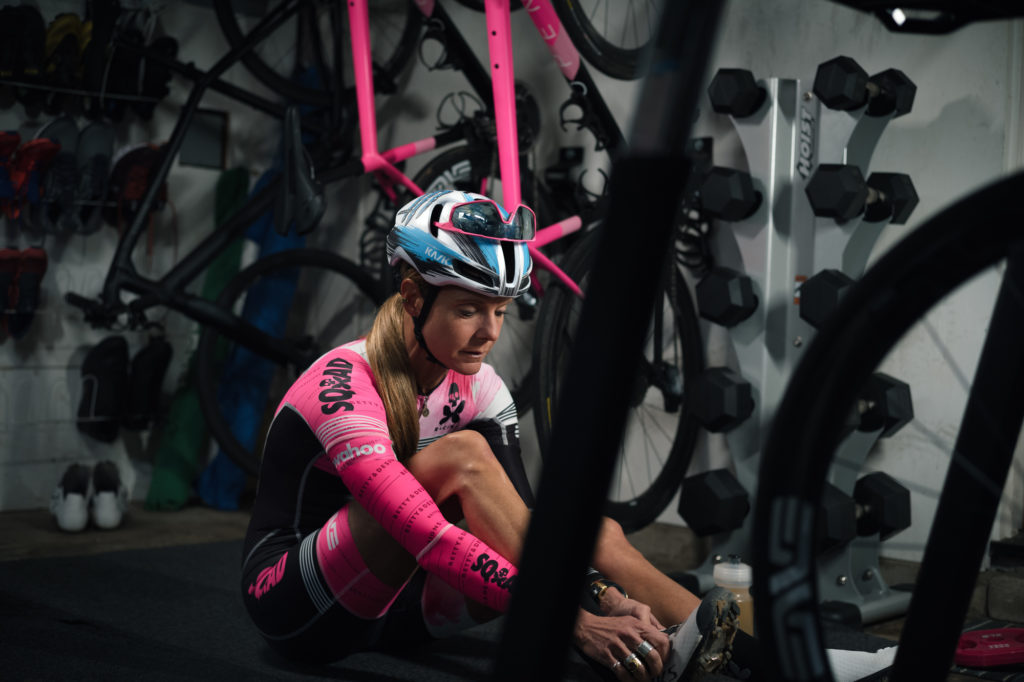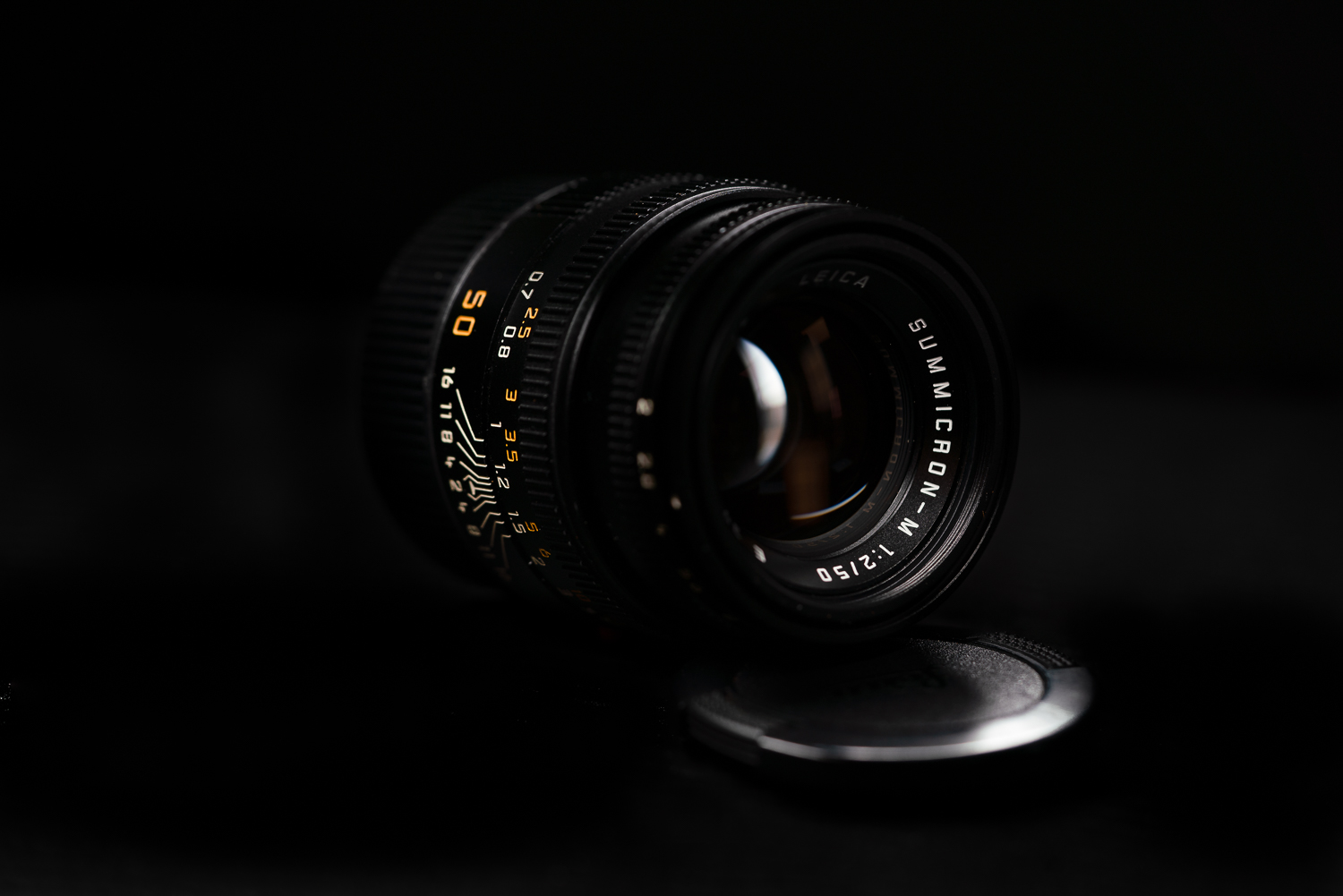Leica has been making a 50mm Summicron since 1953. The storied history will create some confusion for you if you are shopping for one because there are so many versions of this lens. The different versions are: Main Reference: Ken Rockwell
- Type 1: 1953-1960. This is a screw mount (M39) and collapsible version of the summicron.
- Type 2: 1956-1968. Also known as the “Rigid” and “DR” which stands for dual range. These are noncollapsible and generally chrome bodies. The DR version accepts near focusing goggles. If you use a digital Leica skip this version. It won’t work properly on a digital Leica. There is a great discussion of the DR version lens on the Cameraquest website.
- Type 3: 1969-1979. This is the first summicron with a widely available black body and a similar look to the modern summicron 50mm versions. It has a focus tab, removable hood, and a longer focus throw than the more modern options. Some were made in Canada. There is significant discussion on the forums about this lens. If you are a glutton for punishment you should go and spend some time reading about it. The short summary is that some say it is a “bastard child,” while others say it is wonderful. The overall consensus seems to be that it has less resolution and more contrast than the more modern versions with a more vintage rendering. I have never used one.
- Type 4: 1979-1994. This lens has the same optics as the subsequent Type 5. The main difference between versions 4 and 5 are related to the build and ergonomics. Type 4 has a focusing tab and removable hood. Some were made in Canada.
- Type 5: 1994-2013. This lens has the same optics as Type 4 but Type 5 does not have a focusing tab. The lens hood on version 5 is telescopic and not removable.
- Type 6: 2013-current. This is the current “APO” version. It is outside the price range for this website so we won’t be discussing it here.
I don’t have enough experience to tell you which version you should get. With the various options, it is also not one size fits all. Unfortunately, this leaves you sorting through the different forums and reviews to piece together a picture for yourself if you chose to get into the nitty-gritty between the different versions.
When I was doing my research, I used the following “decision tree” of questions to guide the process. My approach is based on a use case more than anything else.
- Do you want something vintage and really old and won’t destroy the bank account? Consider Type 1. Beware that the old glass was “soft” and “cleaning marks,” haze and all the rest are common. Buying old stuff on eBay is a pain. Also, I am not a huge fan of collapsible lenses but that is a personal choice. Others prefer them. If you go this route, my bet is that you know exactly what you are looking for. Don’t go this route if you are just looking for something with the word Leica on it. This is a specialty lens.
- Do you want vintage Leica to adapt to a mirrorless camera but don’t want to decimate the bank? Consider one of the Type 2 (rigid and DR) options. These are in less demand (e.g. less expensive) than their more modern counterparts. Perhaps that is because they don’t work with digital Leicas but that is not important to you. You know who you are. This could be your foot in the door to the world of Leica.
- If you are considering something modern, look at Type 3,4, or 5. This is where you are going to have to do your research. I can only comment on version 5 (see below) and likely version 4 because the optics are the same. When you do your research, therefore, your main goal is to sort out if you want a version 3 vs. a 4 or 5. Try not to lose your mind in the forums where guys (always guys – never women) fight about these things.
- Are you Ok with spending less and don’t mind getting ridiculed by collectors and posers? Get a version 3 or 4 with the word Canada on it? Nice work, you just saved hundreds of dollars.
- Do you like a focusing tab? Get version 3 or 4
- Do you like your lens hood to constantly get bumped and pushed back into the lens? Get version 5
- Do you want to support the TAAB company? Get version 5.
Did you sense a little snarkiness toward the end there? Keep reading.
On garden gnomes and parked cars:
When you see reviews online about Leica lenses, everything is graded on a curve. People nitpick Leica lenses (at least the modern ones) like they would nitpick a famous piece of artwork or album even though they obviously love it. Nitpicking these lenses is like saying “The Low End Theory by A Tribe Called Quest, even though it is one of the most critically acclaimed rap albums of all times, could have been better if the rhymes were a little more serious and less goofy” and then 5 minutes later they tell you that it is in their top 10 albums of all time.
To me, that is what reading 99% of the discussion regarding the Leica Summicron m-50 is like. Take Leica Summicron-m 50mm lens reviews, including this one, with a grain of salt. Everything is graded on a curve. With that, please allow me to commence nitpicking the lack of a focusing tab and the collapsible lens hood.
I am a focusing tab guy. I like to have a tab there to let me know where I am, It allows me to do the “f8 and be there” routine where I set the aperture to f8 and then just focus close, focus middle, or focus far and I can pretty much get on with my business without ever using the focusing patch of the range finder unless I want to. Without a tab that is not possible. The good news is that TAAB’s middle size fits perfectly on the summicron. Although it feels janky to be jury-rigging my fancy Leica lens, the TAAB works spectacularly which leaves me with only a single issue to nitpick.
In addition to my focusing tab habit, I also have a habit of using UV filters and inexpensive lens hoods. This allows me to leave my lens caps at home and keep the lens protected. I like a solid lens hood to grab on to, protect the glass, and knock into the table when the camera falls forward when I put it down. The hood also keeps the lens (actually the UV filter) clean when I stick the camera face down in my camera bag. The dinky, plastic, retractable, telescopic, hood on the Leica Summicron 50mm V5 is not up to the task. It is forever retracting on its own. I also don’t understand how I am supposed to allow it to bang around since it is part of the lens and cannot be replaced. For me, this is a significant issue.
If you read the introduction to this post, you should be asking me, “If you are such as smart guy, why didn’t you just get a version 4 of the lens so we wouldn’t have to listen to your nitpicking?” My answer is that you are correct. I am kicking myself. I got this particular lens at a good price from a photographer who I trusted so I knew I was safe on the condition of the lens. I figured that would be enough to overcome the nitpicky usability shortcomings. Now I own a great lens with a TAAB and an annoying lens hood. If I had it to do over, I would have spent more and purchased a Leica Summicron 50mm V4. #liveandlearn #firstworldproblems.
Does it have SOUL?
After thinking about this for a long while, I decided to do a non-review review for the Leica Summicron-m 50mm. Previously, I mentioned that all Leica reviews are graded on a curve. I am human. I started to do the same thing. It was lame.
Do you really need me to do like everyone else and offer your a gratuitously nitpicky review of what is considered by many to be a legendary lens just to virtue signal to the Leica haters to let them know I am not a Leica fanboy through and through, and then do a 180 at the end of the review and tell you I love it? Do I have to say that it flares a little but it is manageable? Do you need me to explain how this lens has the Leica look? Do I have to say it has just enough contrast, just the right colors, and does it all with blazing sharpness?
I would contend that I do not need to do that because all of that has been written before and this lens is the lens to which others 50mm lenses are compared. It should not be graded on a curve.
So did I keep it?
You would think based on my non-review review that this lens is a keeper? Right? Well, nothing is that simple when you are dealing with first-world problems.
To learn more about which lenses I kept and which lenses I sold, learn from my experience, and to support this site, please check out my Leica Lenses for Normal People:The Recommended Lists.
Sample Images





